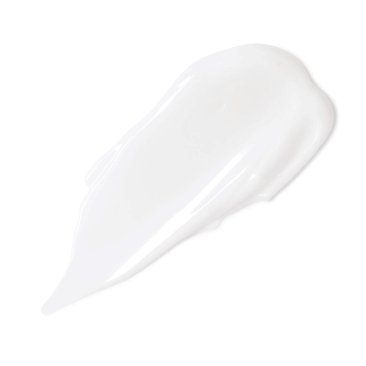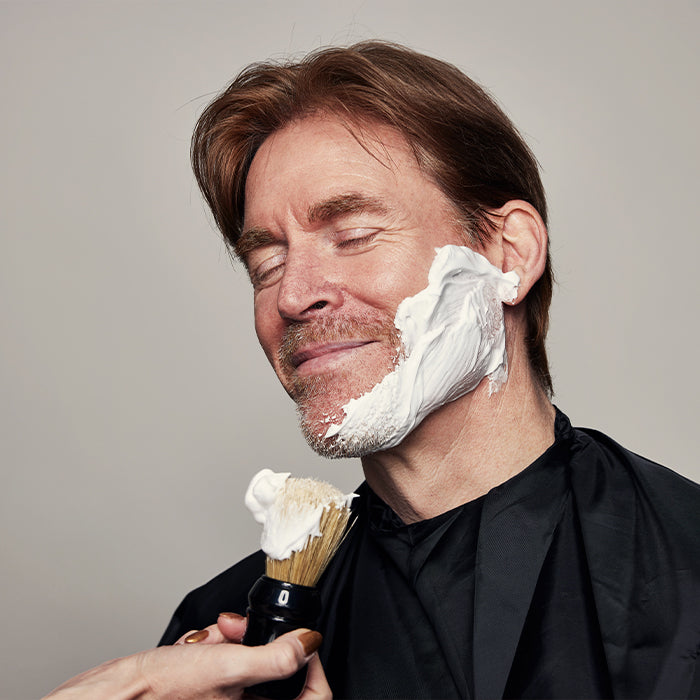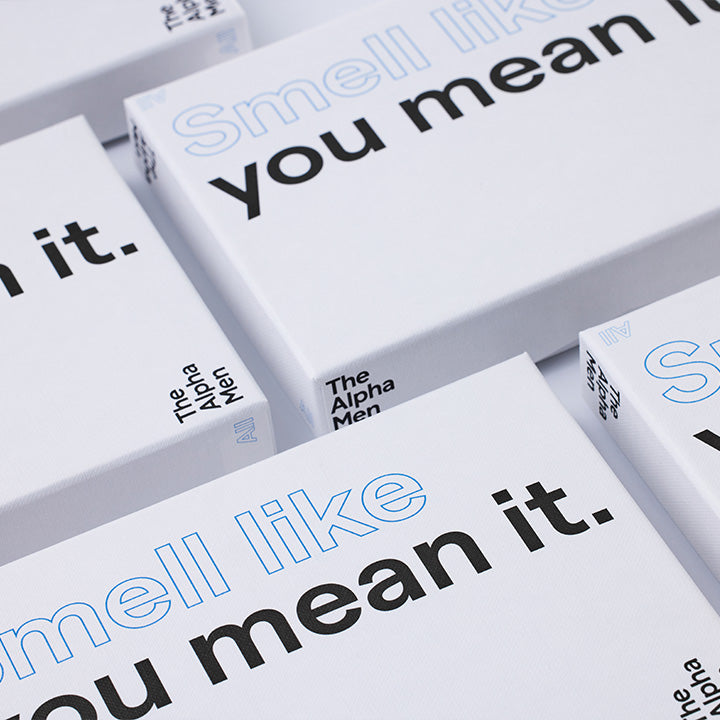If you, as a man, want to become a bit at home in the world of facial skin care, it is important that you are aware of all those high-tech terms on the packaging. There are quite a few active ingredients in the various skin and hair care products.
And it's possible that you put something on your skin that always gave you that rash. Without you knowing. Not that we're going to let you study to be a dermatologist, mind you. Nope. But if you know what all those (bizarre) terms mean, you are at least aware of what you can or better not buy.
Let's share the most common ingredients, mixtures and powerful components with you and explain what they stand for. Because only then can you see what may or may not be good for your skin.
Active Ingredients
These are the main ingredients present in a skin care product. Of course, all these main components must always be stated on the packaging of the bottle, vial or tube.
AHAs
Various acids are used in many skin care products. For example alpha hydroxy acids. If you notice it at all, these acids probably mean nothing to you. While you've probably been smearing it on your delicate skin for years. But what exactly do they do for your skin: AHAs have been used for various purposes for many years.
Even by dermatologists. These components help to strengthen the skin and make it more elastic, thus counteracting aging. It therefore supports the skin cells in renewing them so that the skin continues to look fresher and younger.
However, be careful with sensitive skin. It is possible that a higher volume of anti-aging (Alpha Hydroxy Acids) has been added in a certain product and that can cause irritation for some sensitive skin types.
Amino acids
Amino acids consist of proteins and form storage stations and are transporters of various types of nutrients such as:
- Minerals
- Fats
- Vitamins
- Carbohydrates
- Water
- Protein
Amino acids are therefore extremely important for the metabolism of the human body. In addition to the above properties and with sufficient presence of these substances, they also offer protection against hair loss. Amino acids are also vital to arm your body against diseases such as diabetes and osteoarthritis.
If it is the case that you have trouble falling asleep, there is a chance that you have too few amino acids in your body. Although you might not expect it, amino acids also have a positive effect on erection problems. Finally, a correct number of amino acids in your body can also protect you against high cholesterol. Indispensable in the body!
Handy: Amino acids are mainly found in dairy products, eggs, salmon, chicken, beef and vegetable soy. Vegetarians and vegans should therefore make sure that they get enough amino acids in another way.
Anti Aging
These 2 words actually say it all: stop the aging process. A process that even as a man you cannot avoid. You get older and so does your skin. And we would like to put a stop to that. At least, as long as possible! You can counteract anti-aging in several ways. We want to avoid wrinkles, crow's feet, blemishes in the face, color changes and, for example, spots in the face. Draconian: Surgical procedures. But Botox injections are now also indispensable. The sun is also a main culprit for aging the skin.
Of course there are also a huge amount of products available that may or may not support the skin in the aging process.
What are the first signs:
- Lines and wrinkles appear
- The skin loses the necessary fats
- The bone structure decreases
- The skin becomes more and more 'droopy'
Antioxidants
These substances counteract free radicals. When the skin oxidizes, it actually means that the skin is aging rapidly. Vitamins A, C & E are examples of known antioxidants. Of course you can also find it in food. For significant support from within. Fortunately, there are more and more good skin care products that contain these vitamins so that you can tackle the skin directly.
Some important antioxidants to take:
- ginger tea
- Spinach, tomatoes
- Strawberries, blueberries, goji berries, raspberries
- Dark chocolate – Jay!
Bakuchiol
Probably never heard of it. Bakuchiol is a very special substance that is now often added to anti-aging products due to the beneficial components on board. The component comes from the seeds and leaves of a plant. The Babchi. The natural product has a number of fine active substances because it has almost the same effect as retinol (vitamin A - keeps the skin elastic). It is also an antioxidant and has an antibacterial effect.
BHAs
No doubt you've heard of it. BHA is an acid. Also salicylic acid. Beta Hydroxy Acid.
With creams or lotions to which BHA has been added, the skin is generally exfoliated. Also exfoliate. With this you scrub the dead top layer (skin cells) of the skin with which you can deeply cleanse your skin. Of course you take almost all imperfections with you during such a scrub session. Incidentally, it is not advisable to exfoliate too much with BHAs in the middle of summer. With this, you can damage sun-ravaged skin too much.
Biotin
Biotin is actually a vitamin B. B8 that is. This water-soluble vitamin is very good for the skin, nails and hair. An essential micro nutrient that is very good for supporting hair, skin and nails. We do not produce biotin ourselves. However, the bacteria in your body do. Biotin is found in various vegetables, nuts, grains (wholemeal), eggs and liver. When you have a shortage of biotin, you can notice this in skin rashes, nails that become more brittle and a reduced resistance.
Dermatologically tested
Dermatologically tested means that the product has been tested by a specific group of people before being put on the market. It just says nothing about the size and composition of the group and also about the results of the test. It is therefore possible that the product has only been tested by a few people, only by people with easy skin and it is also possible that these test persons were not at all satisfied with the products.
Perhaps the test group experienced enormous irritation. Many people fall for this term, but don't be tempted. Consider, for example, Oma's Wet Cake or the term organic .
Cosmetics
Cosmeceuticals go just a little further than average drugstore products. Cosmeceutical is a combination of Cosmetic and Pharmaceutical. It is actually a product that does more than an average drugstore product, but does not fall under the category of medicines.
They actually improve the skin because they contain more active ingredients. According to the law, products in the drugstore may contain a maximum of 3% active ingredients. Products available in a pharmacy may contain a maximum of 9% and products from a specialist may contain between 15% and 24% active ingredients. Incidentally, active ingredients have been scientifically tested and also do what they were developed for.
Exfoliant
Anexfoliant is a way to gently cleanse your skin. Also polish carefully and do not scrub roughly. This allows you to remove any dead skin cells and other irregularities that may be present. It is also an excellent way to tackle existing pigment spots. Please note: in the summer months it is not recommended to (frequently) exfoliate the skin.
glycerin
This material (also called Glycerol) is often used to hydrate the skin. It is a natural substance that is now added to many skin products. Usually extracted from vegetable fats. In the past, Glycerin was also extracted from animal fats. It is now found in many oils and fat products.
Charcoal
This in itself is an odd duck in this list. Because charcoal is generally a substantial component for grilling spare ribs. However, in extremely ground and cleaned form, activated charcoal is a very active substance to purify your skin and teeth. Charcoal processed in a skin care product has the property of absorbing toxins and chemicals from the skin.
Skin type
Humans have a diversity of skin types. Did you know that the skin is the largest organ of your body. Skin types come in different colors and associated properties. Different types:
- The oily skin
- The dry skin
- The sensitive skin
- The combination skin
- Mature skin
The skin types can also be divided into skin types 1 to 6. Types 1 and 2 can burn quite quickly in the sun because the skin, hair and eyes are light in color. With light skin, there are also regular freckles. Type 2 also burns relatively quickly and tanning takes longer. Skin types 3 to 5 have tinted skin, usually with dark hair and ditto eyes. Burning of the skin is almost non-existent. Skin type 6 occurs in black types. This skin can withstand the sun's rays extremely well.
As you will understand, it is important that skin types 1 and 2 need extra care with regard to bright sun rays. So rub well with a high SPF!
Hyaluronic acid
This acid occurs naturally in our connective tissue. But also in the skin and the nervous system. This revitalizing component is important to hydrate our skin and ensure proper moisture balance. It is anti-inflammatory and contains antioxidants that protect the skin against free radicals.
Hypoallergenic
You come across this term very often when advertising a skin care product. The term Hypoallergenic. Hypoallergenic means that the product contains as few allergens as possible. But what exactly are allergens?
Allergens are substances that your skin can react to. It therefore means that you have little chance of an allergic reaction when you use the product. Hypo means less. It does not mean that there are no allergens present in the product in question, but less. So there is always the possibility that you could still get an allergic reaction.
Hyperpigmentation
The word, hyper actually says it all. These are overactive pigment cells that multiply unintentionally. You see this when the skin in certain areas turns darker than the rest of the skin. It can get browner, black or a (light) gray complexion (facial color).
It is in fact a skin condition. If this is the case, it is best to make an appointment with the dermatologist. It is advisable not to experiment with ointments yourself because there are many variants of hyperpigmentation. If you use the wrong products, this can have a counterproductive effect.
Melanin
Melanin is a skin's own substance that causes a dark discoloration of the skin when it comes into contact with UV rays. This substance provides that beautiful brown complexion that protects our skin from the sun. The rate of melanin production differs per person. When the skin cannot keep up with the production of melanin due to too much UV rays, the skin is at great risk of burning.
moisturizer
Also called, moisturizing cream. Today it is on almost every package.
The skin is exposed to many external effects. A hot shower, low humidity (when it freezes) or frequent stays in an air-conditioned environment, for example. That dries out the skin. Then your skin needs hydration. That is exactly what a moisturizer does: it ensures that the skin can retain moisture better.
Is a moisturizer the same as a moisturizing product? No. A moisturizer also restores the skin, a moisturizing product does not have to do that. That is why a moisturizer often contains protected and restorative ingredients in addition to hyaluronic acid, in contrast to a moisturizing product that often only contains hyaluronic acid.
Niacinamide
This component is actually a vitamin B3 which occurs frequently in our own skin. As a component, you will often find it in skincare products due to its supporting effect on the skin. Especially in anti-age serums and creams that have to hydrate. Niacinamide in a somewhat higher concentration is very good to use foracne or other skin conditions such as excessive sebum production.
Omega-3
It is often found in oily fish. For example, salmon, herring, mackerel and tuna are full of Omega-3 fatty acids. So the good fats. So it doesn't hurt to eat these fish every now and then. You may know the best-known unsaturated fatty acids as the alpha-linolenic acid (ALA) or the, comes ie: eicosapentaenoic acid (EPA). The body benefits from a sufficient intake of Omega 3. It protects against cardiovascular disease and is therefore also part of a healthy diet.
Omega 3 is not only found in fish and shellfish, but also in various oils such as walnut oil and linseed oil. You will find omega-3 to a lesser extent in meat and leafy vegetables.
Peptides
Peptides are a chain of amino acids.
There are many types of peptides. They quickly run into the hundreds. Each peptide consists of a specific combination of amino acids. When you bring certain peptides together, proteins are created: the building blocks for your skin. Collagen is such an important building block. It keeps the skin elastic, young and resilient.
Peptides also occur naturally in your body. Fortunately, because they are important to generate radiant skin. Peptides are very common in day and night creams. They work very effectively on and with the skin. This is because it connects excellently with the skin and stimulates collagen production.
Retinol
This component is a vitamin A that has the property of anti-aging skin because it promotes cell renewal. In America they call it “the hottest anti-aging ingredients on the list”. They also support the production of collagen (keeps the skin elastic and firm) and it is a booster against wrinkles, crow's feet, grooves and lines in the face.
Please note that you do not rub yourself with retinol-containing products when you go into the sun. After applying it, it makes the skin more sensitive to sunlight - UV-A and UV-B radiation.
pH neutral
Every skin has a pH value. The pH value indicates how acidic or basic the skin is. Normal skin has a pH value around 5.8. The more acidic, the lower the pH value. The higher, the more basic. When a product is pH neutral, it means that the pH value of that product is equal to the pH value of normal skin. When the pH value of a product deviates greatly from a neutral value, the risk of irritation is high. Especially if you have sensitive, dry skin or skin with skin problems such as acne and rosacea.
Razor burn/Shaving burn
This is a skin irritation caused by a (wrong approach) to shaving. After the shaving session, there may be a (fire) red skin that feels painful. It gets irritated by, for example, not having heated the skin first, so that the pores and hair follicles are not open.
But blunt or wrong blades can also contribute to this. It is then best to treat the battered skin with cold water and gently rub it with the best aftershave balm after drying. Or a nourishing face cream with soothing ingredients offers a comfortable alternative.
Shea butter
One of the most effective products that you can apply to the skin is shea butter. It immediately absorbs into the skin and helps to revitalize it at a high level. It also has beneficial effects because the fatty acids on board not only moisturize but also provide anti-inflammatory effects in the skin. Due to the nutrients and fats present, it also supports the production of collagen, which in turn contributes to anti-aging.
Shea butter is made from the seeds of the African shea tree. In its pure form a fairly thick substance, but when you spread it firmly over your hands, it will melt by itself at some point. It is then a natural benefit for the facial skin. Usually, however, shea butter comes back as an addition to high-quality body care creams and oils.
SPF
You see this more often in the magazines. Advertisements that mention an SPF of 50! Well, SPF stands for Sun Protection Factor. The number represents the effectiveness of the protection. This concerns the UVA and UVB radiation. UVA is always there anyway. Even when it is cloudy. This radiation is quite mean because it sees a chance to also radiate through glass and clothing.
Which type of SPF you need also depends on the type of skin you have. But also the time you are outside that day and the position of the sun is of course also a determining factor. A sunscreen with SPF lasts an average of 2 hours. The effect fades with the passage of time. So make sure that when you are outside in the summer, you always apply a good sunscreen every 2 hours with a high-quality sunscreen including a high Sun Protection Factor.
Complexion
This is hue. So facial color. And you have them in different types. From (very) light to (very) dark. Against the black.
T Zone
You may have come across this term, but don't know what it means. The T-zone has to do with the areas of your face. Combination skin that is. With 2 different properties. In combination skin of the T-zone, the forehead, nose and chin are often a bit oilier than in the cheeks and jawline. So that makes it a bit more challenging in terms of skin care because you speak of 2 different skin types.
UVA/UVB
Solar radiation. Of the type you have to protect yourself against, especially in the summer. What does UV mean? Very simple: Ultraviolet. This is radiation that is released by the sun's rays. Even if it is hidden behind the clouds. Sunlight consists of about 95 percent UVA radiation. The rest from UVB radiation . The latter is harmful because it can penetrate deep into the skin.
As you know, this radiation can lead to a massive breakdown of skin cells. The collagen is broken down, making the skin less elastic and firm. UVB rays have more power than UVA but have a so-called short wave radiation. This reduces the chance that it can penetrate firmly into the skin. However, UVB is more dangerous because this type of radiation can lead to skin burns.
Vitamin C
This vitamin is essential for the human system. However, unlike other vitamins, we do not make it ourselves. So we will have to take in Vitamin C through nutrients ourselves. Large consumers of this vitamin are the skeletal muscles and the liver. Vitamin C also has a strong antioxidant function, which ensures a good defense against germs.
But also against the degradation of metals such as cadmium, nickel, lead and mercury. Vitamin C is essential for the production of collagen (keep the skin young and elastic). Vitamin C is a bomb that is also responsible for strong tissues. Of great importance for the support of all muscle groups (including the heart!), skin and joints. Vitamin C is also a powerful antioxidant. It supports your resistance across the board. You can find vitamin C in:
- Kiwis
- Orange
- Strawberries
- Black berries
- broad beans
- Broccoli
- Green cabbage
- Sprouts
- Kale
- Red pepper
Vitamin E
This vitamin, like vitamin C, is a strong antioxidant (it protects against free radical damage). Free radicals are very aggressive molecules or atoms that can damage DNA, proteins and cells in the body. Too much vitamin E is not harmful. Only the blood clotting of people with a vitamin deficiency and people treated with blood thinners can be affected. Vitamin E can be found in:
- Nuts
- Seeds
- Margarine
- sunflower oil
- Bread
- Vegetables fruit
Free radicals
Already discussed a number of times in this article: free radicals. We should not have too much of that in the body because these molecules can be at the basis of cancer. But there's no escaping it. Free radicals are created by the oxidation of the body (the aging process). These are erratic molecules that you can call unstable. Free radicals like to destabilize cells and tissue. With changes in DNA as a result. Which in turn leads to various syndromes such as Parkinson's, for example. But unfortunately also cancer and other nasty diseases.
Hopefully, this Skincare dictionary will help you for the time being when it comes to purchasing the right skincare products. If you still have questions or comments, we would of course like to hear from you!
Good luck!
Your friends, The Alpha Men.




















